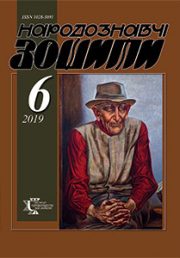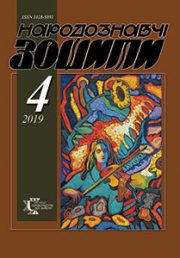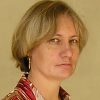The Ethnology Notebooks. 2025. № 4 (184), 775—784
UDK[069:5](477.83-25)(092)В.Дідушицький
DOI https://doi.org/10.15407/nz2025.04.775
VOLODYMYR DIDUSHYTSKY. IN HONOR OF HIS 200TH ANNIVERSARY
BOKOTEY Andriy
- ORCID ID: https://orcid.org/0000-0003-4626-9585
- Doctor of Biological Sciences, Senior Researcher,
- Professor at Ivan Franko National University of Lviv;
- 4, Hrushevskiy St., 79000, Lviv, Ukraine,
- Leading Research Fellow
- at the State Museum of Natural History, NAS of Ukraine,
- 18, Teatralna St., 79000, Lviv, Ukraine,
- Contacts: e-mail: Bokotey.a@gmail.com
Abstract. In 2025, it will be 200 years since the birth of Count Volodymyr Ksaveriy Tadeusz Didushytsky — an extraordinary personality, a famous zoologist, ethnographer, philanthropist, political and public figure, who founded in the middle of the 19th century the Didushytskyi Natural History Museum in Lviv (today the State Museum of Natural History of the National Academy of Sciences of Ukraine, (DPM), one of the oldest and richest in fund collections of natural history museums in Europe.
The article highlights the history of the family, the figures of parents and teachers, the formation of the personality. Considerable attention is paid to the creation of the Didushytsky Museum of Natural History and the formation of the main collections and the most valuable collections: zoological, botanical, ethnographic, archaeological, library. The issue of patronage, exhibition and environmental protection activities of the hero of the day is revealed.
The relevance of the topic lies in the fact that the article is dedicated to a memorable anniversary date — the 200th anniversary of his birth. Despite his significant role in the society of that time and his services to Ukrainians, the personality of Volodymyr Didushytsky has been practically not studied in the national scientific literature.
The object of the study is the figure of Volodymyr Didushytsky, and the subject is his most important achievements: the formation of interests, the creation of a natural history museum in Lviv and filling it with unique collections, patronage, political and environmental activities.
This article is dedicated to Volodymyr Didushytsky — a renowned zoologist, ethnographer, philanthropist, and public actor. It highlights the history of his family, the personalities of his parents and mentors, and the formation of his character. Particular attention is given to the founding of the Didushytsky Natural History Museum and the development of its main and most valuable collections, including zoological, botanical, ethnographic, and archaeological collections, and the library. The article also explores Didushytsky’s philanthropic contributions, exhibition activities, and role in nature conservation.
In recognition of Volodymyr Didushytsky’s outstanding contributions to Lviv and Galicia, a series of commemorative events are planned throughout 2025, the main highlights of which are discussed in the article.
Keywords: museology, natural history museum, philanthropy, nature conservation, commemorative events, Lviv, Galicia.
Received 20.06.2025
REFERENCES
- Brzek, G. (1994). The Dzieduszycki Museum in Lviv and its Creator. Lublin [in Polish].
- Pans’kykh, I.I. (2003). Scientific Library of the State Natural History Museum of the National Academy of Sciences of Ukraine. Naukovi zapysky Derzhavnoho pryrodoznavchoho muzeiu. L’viv. 18: P. 29-38 [in Ukrainian].
- Bokotey, A., Dzyubenko, N., & Susulowska, I. (2022). The natural history part of the Poturzycka Library in the collection of the State Museum of Natural History of the National Academy of Sciences of Ukraine in Lviv: its past and present. About the Dzieduszycki family’s passion for nature (Pp. 130—149). Zarzecze [in Polish].
- Karolczak, K. (2013). The Dzieduszycki family of the Sas coat of arms in the 19th and 20th centuries. Warsaw [in Polish].
- Dzieduszycki, W. (1895). Guide to the Museum of Dzieduszycki family in Lviv. L’viv [in Polish].
- Chornobaj, Yu.M. (2000). Build your own Oykumeny. Naukovi zapysky Derzhavnoho pryrodoznavchoho muzeiu (Vol. 15, pp. 5—12). L’viv [in Ukrainian].
- Karol’chak, K. (2015). Dziedushytsky. History of the family. Potuzhyts’ko-zarichans’ka line. Kyiv [in Ukrainian].
- Dzieduszycki, W. (1880). Dzieduszycki Museum in L’viv. Birds. L’viv [in Polish].
- Bokotey, A., Dzyubenko, N., & Zatushevsky, A. (2024). Catalogue of stuffed birds with atypical colouration and developmental anomalies deposited in the State Museum of Natural History NASU, Lviv, Ukraine. Catalogue of the digitized collections, deposited in the State Museum of Natural History, National Academy of Sciences of Ukraine. Entomological & ornithological collections (Issue 3, pp. 86—165). L’viv. DOI: https://doi.org/10.36885/cdcsmnh.2024.34
- Bokotey, A.A., & Sokolov, N.Yu. (2000). Catalogue of the ornithological collection of the State Museum of Natural History. L’viv [in Ukrainian].
- Karolczak, K. (2024). Ethnographic passions of the Dzieduszyckis. Introduction to the conference. Around the ethnographic passions of the Dzieduszyckis (Pp. 10—23). Warsaw [in Polish].
- Hadaczek, K. (1904). Golden treasures of Michalkow. L’viv [in Polish].
- Bandrivs’kyj, M., &Krushel’nyts’ka, L. (2012). Gold of Mykhailivs’ki treasures and their fate. Lviv: Liha-Pres [in Ukrainian]






